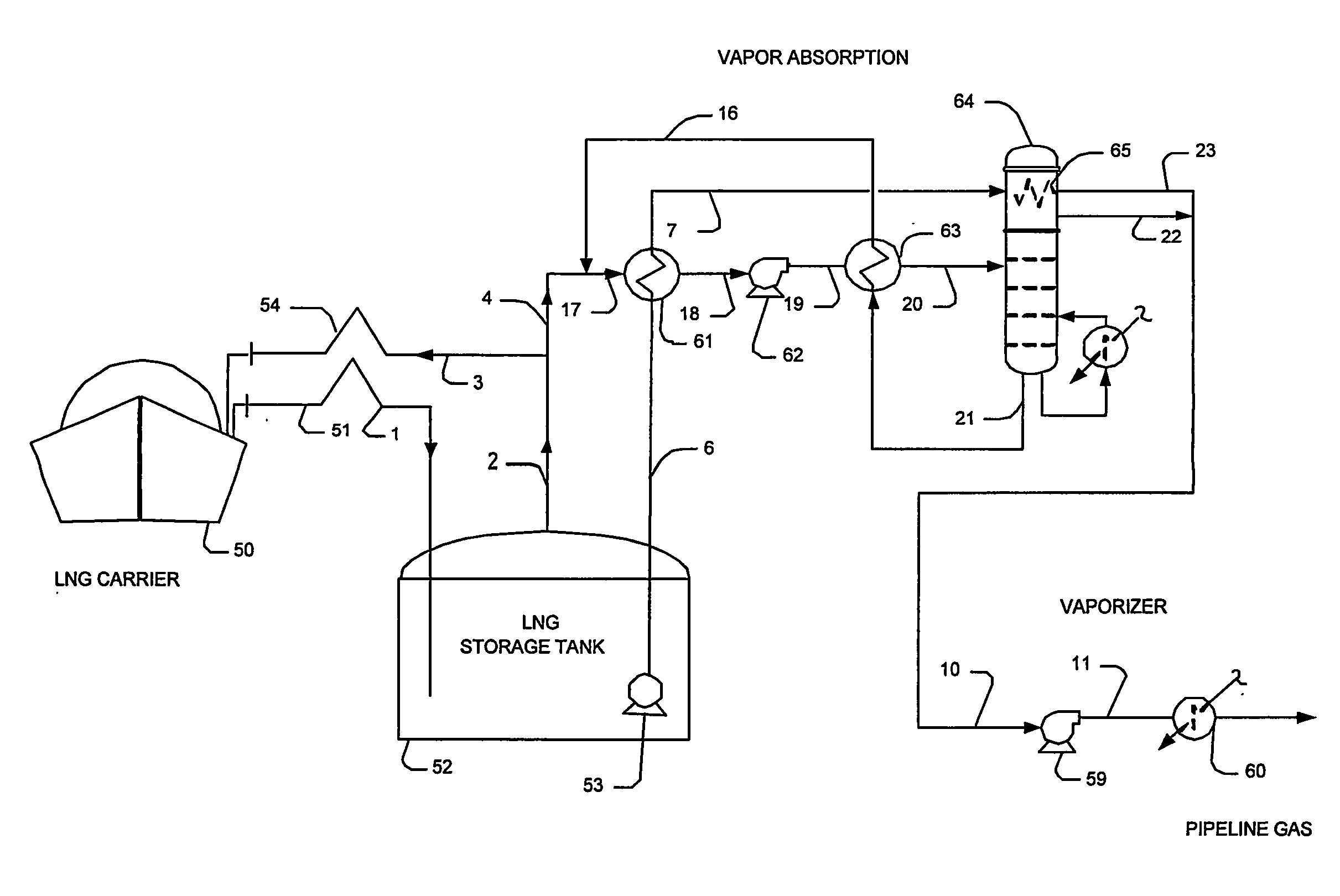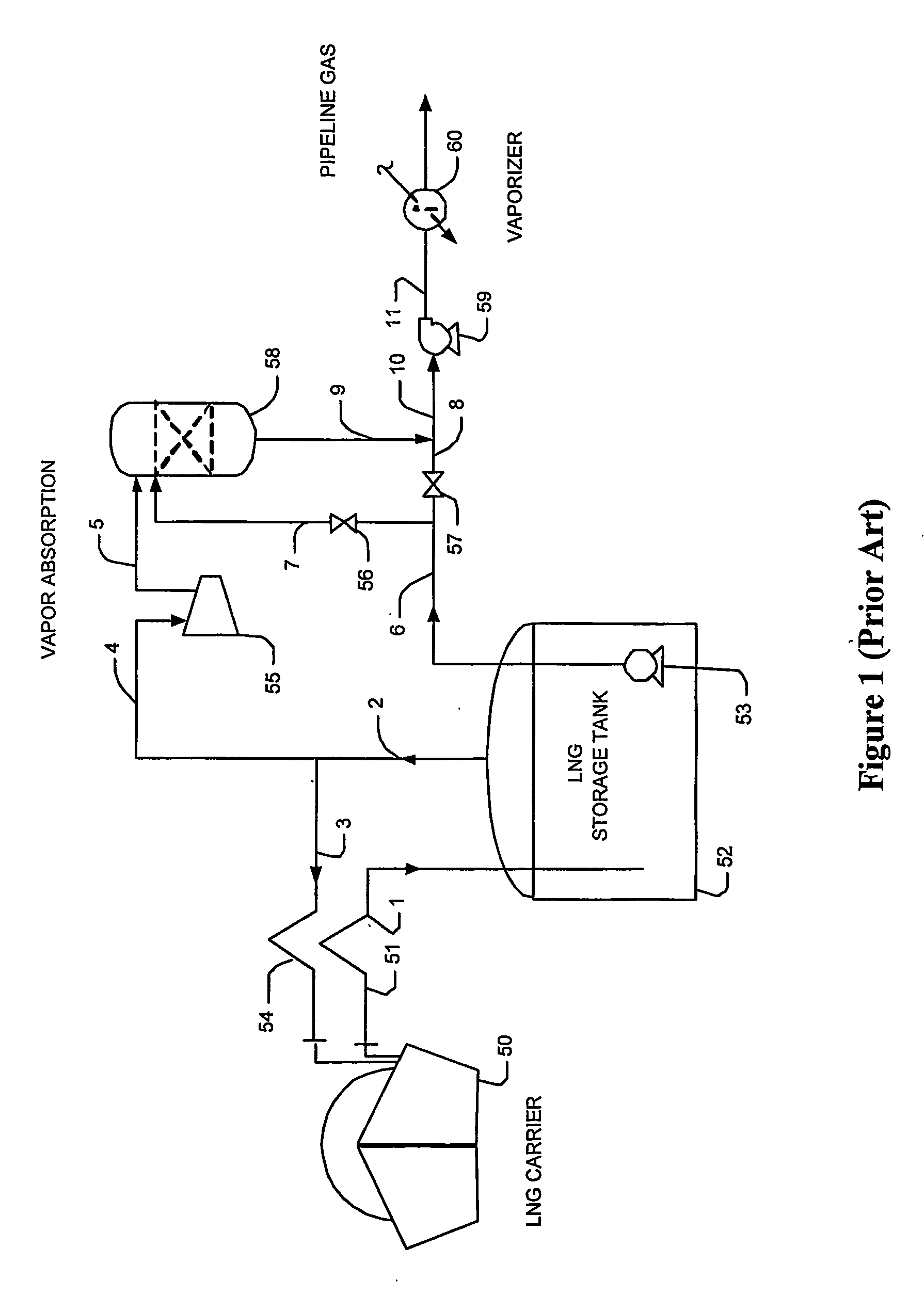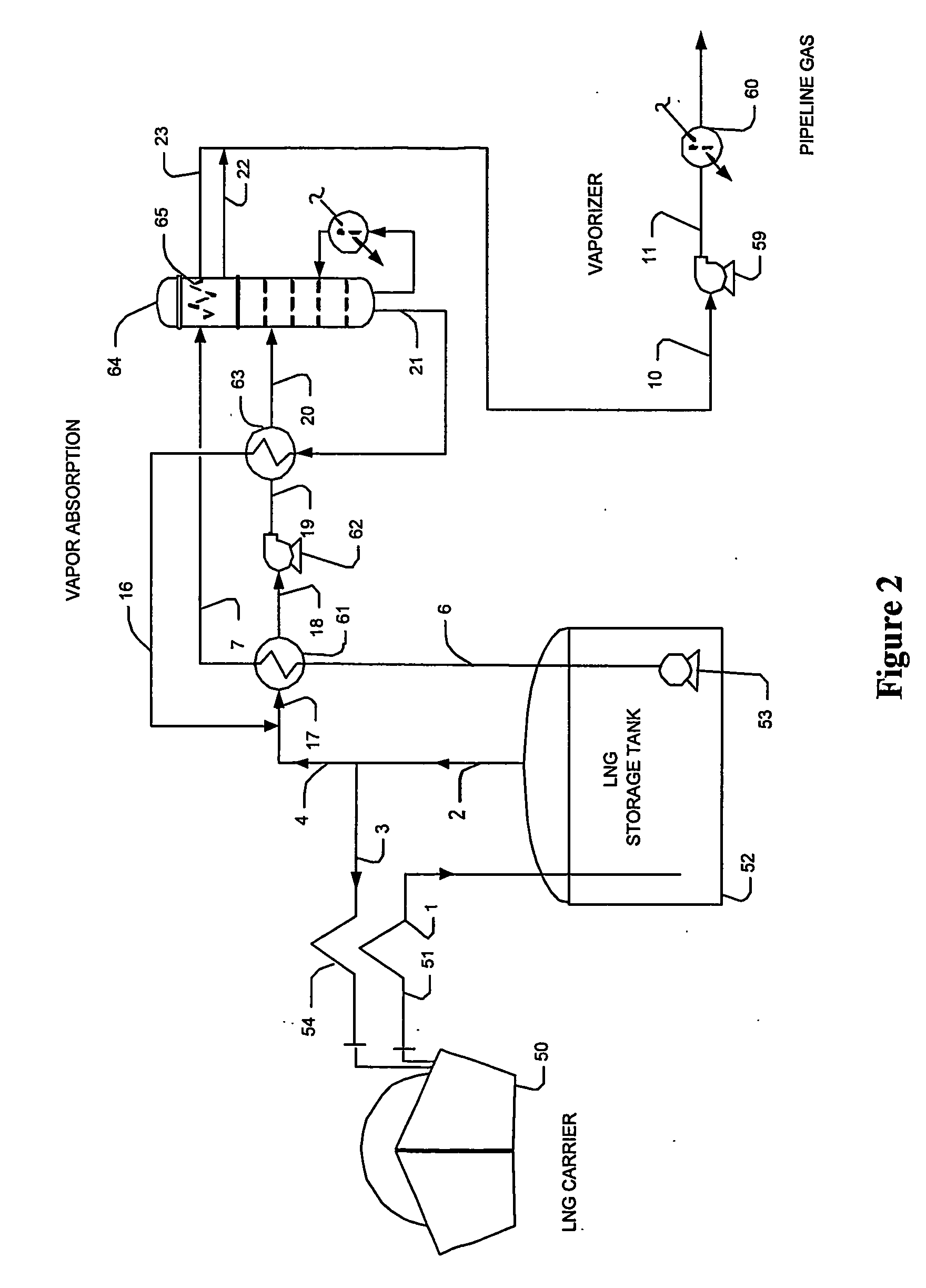Lng vapor handling configurations and methods
a technology of vapor handling and configuration, applied in the field of lng processing, can solve the problems of uneconomical, inpractical configuration, and high energy and operator attention required for vapor compression and vapor absorption systems, and achieve the effect of enhancing condensation
- Summary
- Abstract
- Description
- Claims
- Application Information
AI Technical Summary
Benefits of technology
Problems solved by technology
Method used
Image
Examples
Embodiment Construction
[0020] The present invention is generally directed to configurations and methods of LNG vapor handling in which the vapor (in most cases predominantly comprising N2, C1 and C2) is combined with a heavier hydrocarbon (in most cases predominantly comprising C3, C4 and heavier components) to form a hydrocarbon mixture having a condensation temperature that is higher than that of the LNG vapor. The so generated mixture is subsequently condensed using the refrigeration content of the LNG liquid and the liquid is pumped to a higher pressure. The pressurized mixture is then heated, and (C2 and lighter) vapor is separated from the mixture in a fractionator at elevated pressure. The fractionator overhead vapor is condensed using the refrigeration content of the LNG liquid, while the heavier hydrocarbon produced by the fractionator is recycled to the point of combination with LNG vapor.
[0021] In a particularly preferred aspect of the inventive subject matter, contemplated configurations and ...
PUM
 Login to View More
Login to View More Abstract
Description
Claims
Application Information
 Login to View More
Login to View More - R&D
- Intellectual Property
- Life Sciences
- Materials
- Tech Scout
- Unparalleled Data Quality
- Higher Quality Content
- 60% Fewer Hallucinations
Browse by: Latest US Patents, China's latest patents, Technical Efficacy Thesaurus, Application Domain, Technology Topic, Popular Technical Reports.
© 2025 PatSnap. All rights reserved.Legal|Privacy policy|Modern Slavery Act Transparency Statement|Sitemap|About US| Contact US: help@patsnap.com



